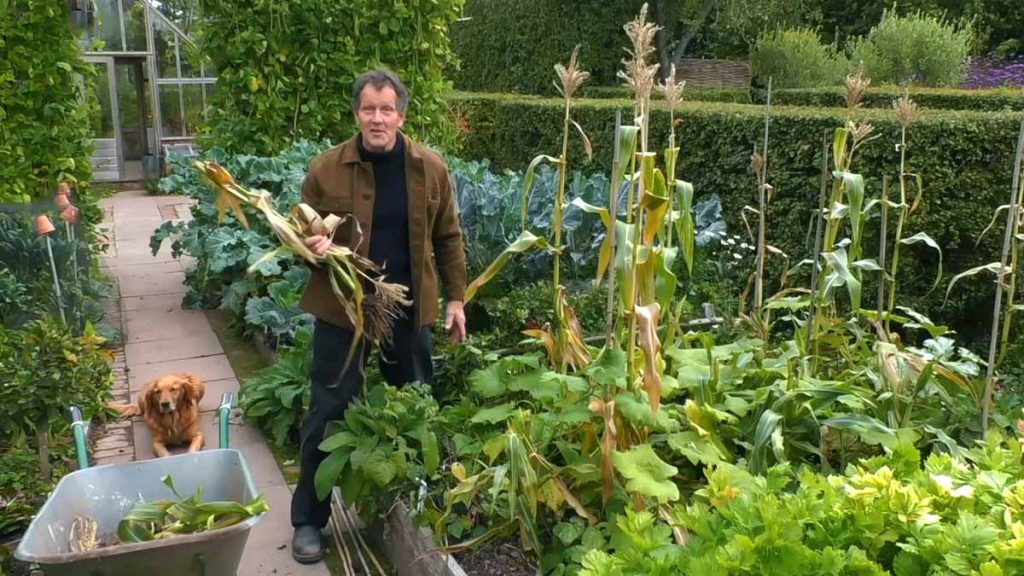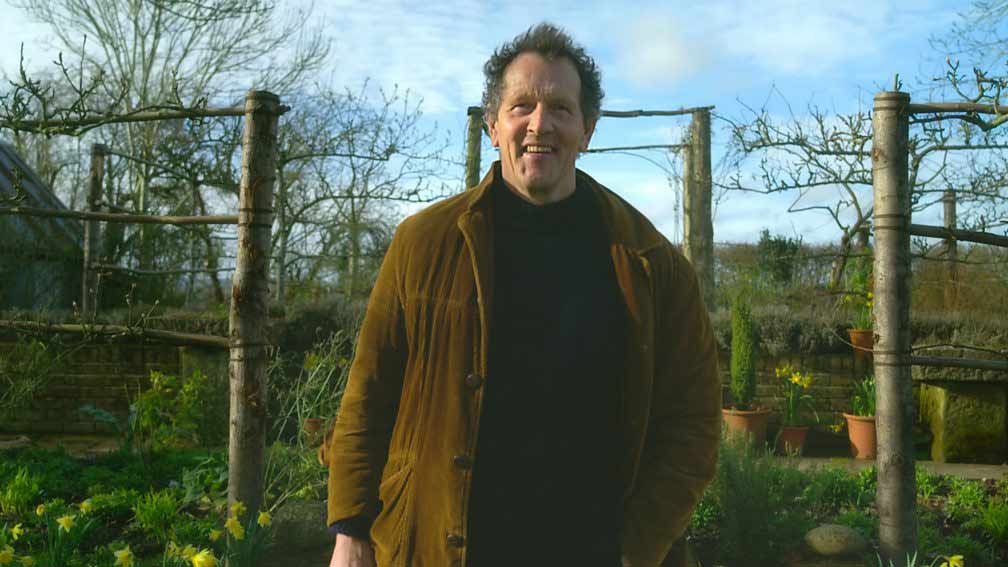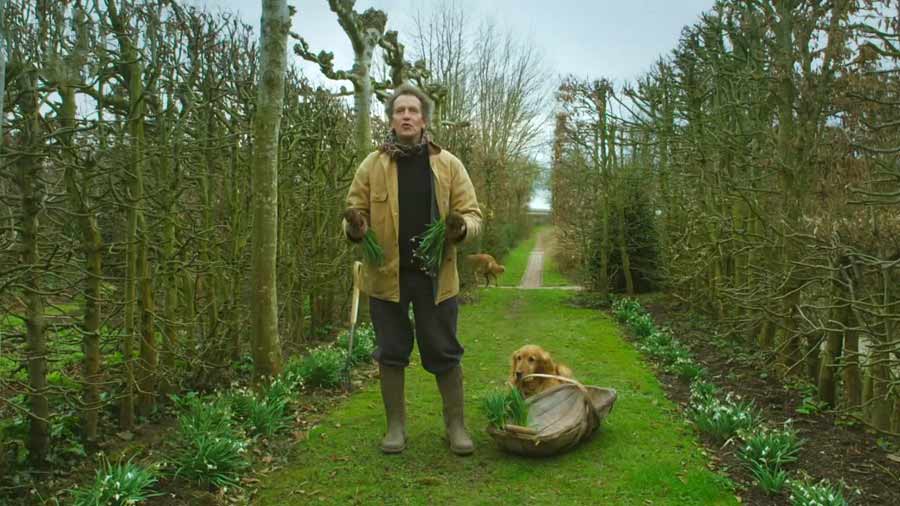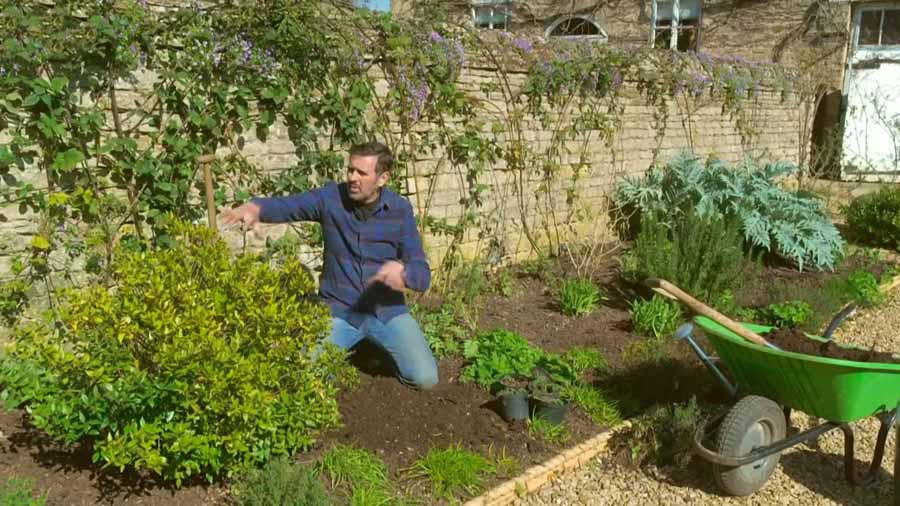Gardeners World episode 30 2020: As Autumn gets underway Monty gives advice on what plants need to be taken under cover now, what can stay out until after the first frosts and others that just need an extra layer of protection. Plus he shows what can be planted now in the vegetable garden.
Joe Swift visits presenter and journalist Kate Garraway in her London garden and discusses how it has been a sanctuary over recent months and we return to Nick Bailey’s home to see the results of the design project he started in his own garden earlier in the year. In Kent, we get another chance to meet a woman who has filled her garden with exotic and tropical plants and we visit Kew’s orchid house to meet the expert who looks after its specialist collection.
Gardeners World episode 30 2020
Grow your own garlic
Not only has the use of garlic in the kitchen increased dramatically in recent years but also the number of gardeners producing their own crop. Garlic is a rewarding, easy-to-grow crop as long as it is grown on well-drained soils.
Choose an open, sunny site and well-drained soil. High humidity around the foliage and wet soils make the crop more prone to disease, particularly if planted in the autumn. Garlic does not thrive on acid soils (below pH 6.5). Reduce acidity by applying lime in autumn and winter.
Prior to planting, improve the soil’s structure, moisture retention and nutrient levels by incorporating organic matter. Apply about two bucketfuls of well-rotted manure or other organic matter such as garden compost every square metre (yard). Avoid using fresh manure. Little fertiliser is required at planting. On average soils apply a balanced fertiliser such as Growmore at 25g per sq m (1oz per sq yd). Where organic matter was not applied, double the amount of fertiliser.
How to take cuttings of tender perennials
Tender perennials such as verbena, bidens, gazanias and argyranthemums are best propagated each year from cuttings. In this way, you can keep the garden supplied with bushy, vigorous plants full of flowering potential.
These propagation methods are suitable for tender perennials such as bidens, gazania, heliotrope, marguerites (Argyranthemum) and verbena. All root quickly and easily, as do other frost tender plants including fuchsias, pelargoniums, penstemons and salvias. Although you can lift or mulch such plants in autumn, cutting them back and keeping them under glass over winter, they can become woody and are best replaced with young plants raised from cuttings.
Foliage plants you may wish to bulk up include coleus (Solenostemon), plectranthus and Senecio maritima.
How to take cuttings
Most tender perennials propagate easily from cuttings. There are two methods that are particularly useful: semi-ripe cuttings and softwood cuttings. You can also find specific advice on salvias, penstemons and pelargoniums on our other web pages.
Most cuttings taken in spring will be flowering in their first summer. Those taken in late summer will be overwintering under glass and be ready to harden off during May.
One of the keys to overwintering rooted cuttings under glass is to keep them on the dry side in bright frost-free conditions of around 7°C (45°F).
Orchid care in Gardeners World episode 30 2020
Many orchids are relatively easy to grow, and given the right care will give a long-lasting flower display. Indoor orchids are mainly epiphytic (growing on trees) or lithophytic (growing on rocks). In their natural habitat this means using trees or rocks as a support and feeding from plant debris accumulated around their roots. There are some terrestrial species that grow in the ground.

Many epiphytic and lithophytic orchids can be grown in containers filled with open, free draining specialist orchid compost. They often form aerial roots outside of the container. Re-pot only when the roots have filled the pot, using a container that is only one or two sizes larger. Do not try to bury the aerial roots in the compost, as they may rot.
Orchids like a variety of temperatures, so choose the best position in the house to suit the needs of the particular orchid you are growing.
Bulbs in pots
Bulbs make a fine display planted in containers or borders, especially daffodils, snowdrops and tulips in spring. They are one of the easiest and most rewarding garden plants to grow.
Bulbs are useful for adding colour to spring borders. Tulips come in all shades, from dark purple to white, and bloom at a time of year when many plants offer muted colours. Other bulbs, such as snowdrops and scillas, are some of the earliest flowering plants in the garden, brightening up the short days of very early spring.
Planting summer-flowering bulbs such as lilies and gladioli can provide dramatic, tall blooms that are scented. Autumn-flowering bulbs, such as nerines, can brighten up the late season with unexpectedly colourful displays. Most bulbs are acquired and planted when dry, in a dormant, leafless, rootless state. Plant as soon as possible. They may flower poorly following later than recommended planting or after lengthy storage.
Exotic gardening in Gardeners World episode 30 2020
Create the atmosphere of a lush subtropical oasis in your own garden using bold foliage and dazzling hot flower colours. Unlike a typical English garden, an exotic-style garden doesn’t have all-year-round interest, instead peaking in a mass of vegetation in summer. However, careful plant choice can extend the season a little into winter.
The typical characteristics of a subtropical garden scheme are exuberant plant with large leaves, structural forms and striking flower colours. This can be achieved in most garden situations providing the necessary conditions are met.
Autumn lawn care
Autumn is the time to examine lawns for signs of summer wear-and-tear, and treat if necessary. At this time of year, any treatment has time to take effect before temperatures fall and growth stops.
Aerating (or spiking) lawns allows better movement of air and water in the root zone. A well-aerated lawn will manage better in periods of drought or waterlogging. For an average lawn, aeration every two to three years should be adequate. Concentrate on areas that receive the most wear and those that are compacted.
Small areas can be spiked with a garden fork, spacing holes 10-15cm (4-6in) apart and deep. On clay or waterlogged soils use a hollow-tine aerator every three to four years. This extracts plugs of soil from the lawn. Hand held and motorized hollow tiners are available. After hollow-tining, sweep up the plugs and then rake a top-dressing (see below) into the holes to improve air and moisture penetration.





Pingback: Gardeners World episode 31 2020 — HDclump — Gardeners’ World 2020